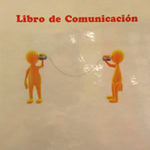Practice: A person receiving services refused to attend her support plan meeting. She said no one listened or cared about her opinions and it was boring. She was not interested in signing forms and listening to other perople talk about her. When I asked about what she like to do, she said she liked parties.
Solution: Make the Support Plan Meeting a “Plan/Party” that celebrates the person’s new goals and what they have acconplished in the last year.
How: The WSC could meet with the person and explain the idea in a positive way. The WSC would discuss with the person when and where the plan/party is to be held and who will attend. The WSC or provider would assist the person in sending out /handing out invitations and plannng the Plan/ Party. Invitations could be designed by the person or purchased at a dollar store, or invitations could be made by phone or internet. Refreshments could be inexpensive and healthy. With the person’s permission, the person’s goals could be announced at the Plan/Party (with the responsible people clapping for goals they will work on?). At the end the person could sign her plan and the WSC could make a toast to the upcoming year.
Who Benefits? How? The person directs the process – who will attend, where, and what goals she/he will work on, and shares them directly with the providers. This also might help the person remember the support plan meeting/party in the future. The support plan meeting becomes a celebration that has meaning to the individual. The WSC learns more about the person and is able to conduct the support plan, including getting plan signatures and elegibility forms signed. The providers understand and remember the goals.
How could others apply this in practice? This practice could be used with other people who do not like support plan meetings. It could also be used when developing an Implementation Plan.



